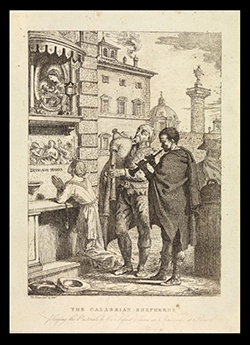Bagpipes in The Hunterian collections
My project is centred on the bagpipe in the prints and images of the Hunterian Collection and University of Glasgow Special Collections. In an online exhibition, I analyse the symbolic value of the instrument in its context, unpacking the story behind its presence in the various artworks. View the exhibition here.
This is an excellent opportunity to explore and uncover the material of these wonderful collections. All the more so, since the bagpipe’s presence in art often hides deeper meanings, and is indicative of specific artistic intentions which escape the modern eye.
The bagpipe is an instrument which has travelled all the way from India, thousands of years ago, and has made its way to the Mediterranean, and up to Northern Europe, becoming the national instrument of Scotland. Throughout its long journey, it has accumulated an incredible range of connotations and symbolic associations – from pastoral to sexual, from devilish to political.
From David Allan to Rembrandt, my exhibition will guide you through the artists’ perceptions of this multi-faceted instrument.
Vivien Williams, PhD, English Literature, awarded 2014
Ph.D. research: ‘The cultural history of the bagpipe in Britain, 1680-1840’
My research focused on the role and symbolism of the bagpipe in literature and art in the period spanning from the advent of Jacobitism to late Romanticism.

